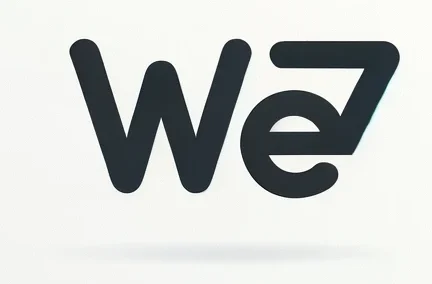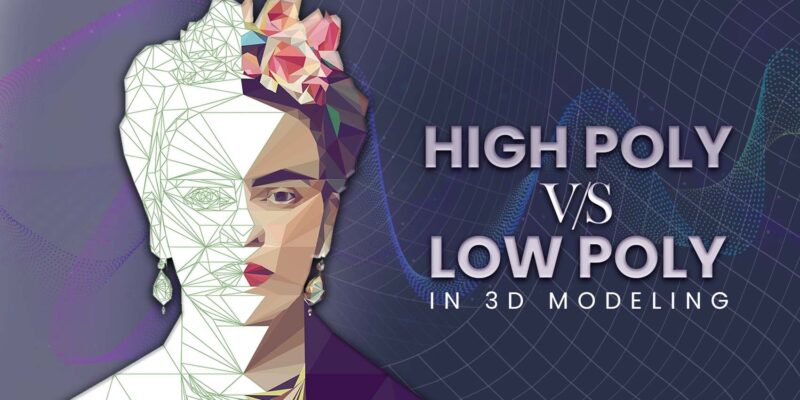3D modeling is the backbone of modern gaming and animation. Every character, prop, or environment you see on screen starts with a mesh of polygons. These polygons determine not just how the model looks but also how it performs during rendering and gameplay.
The debate between using low poly and high poly 3D models is one that developers and artists face regularly, since each approach brings distinct advantages depending on the project’s needs.
Before diving deeper, it is important to understand what these terms mean and why they matter for production pipelines. In games, efficiency and real-time rendering dominate the decision process, while in animation and film, visual fidelity often takes priority.
Knowing when and why to use each approach helps teams save time, reduce costs, and deliver better results.
Understanding Low Poly and High Poly Basics
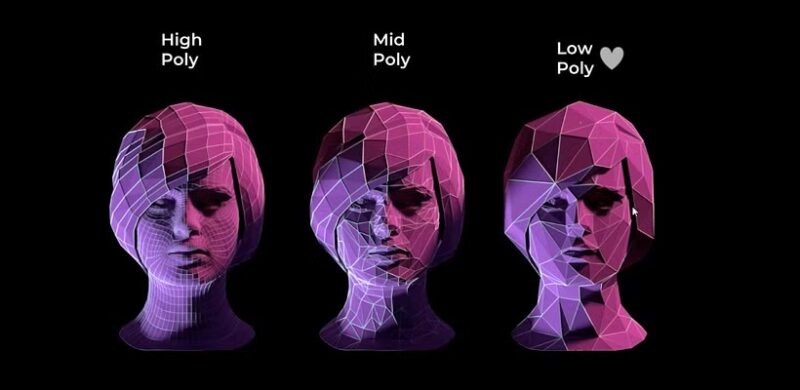
At its simplest, the difference between low and high poly comes down to polygon count:
- Low poly models use fewer polygons, resulting in simpler geometry and faster rendering. They are the industry standard in real-time applications like mobile games, VR experiences, and large-scale open-world environments.
- High poly models feature millions of polygons to capture fine detail. These are used in film, cinematic cutscenes, and in the baking process to create detailed textures for low poly models.
The choice isn’t purely aesthetic – it directly impacts performance budgets, storage requirements, and even creative workflows.
When to Use Low Poly Models
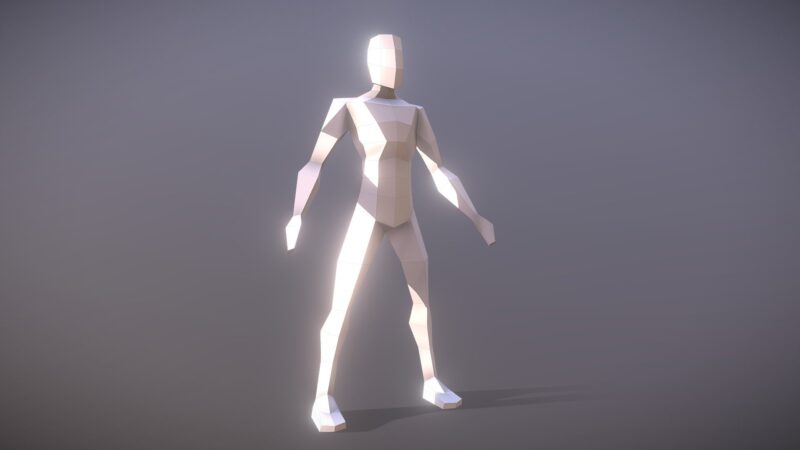
Low poly models shine in scenarios where real-time performance is non-negotiable. Games that need to run smoothly on consoles, PCs, or mobile devices often rely heavily on optimized low poly assets.
For instance, an open-world RPG with thousands of interactable assets cannot afford every object to carry a million-polygon load. Instead, detail is faked through normal maps, textures, and lighting tricks, all of which make a low poly model appear much richer than its geometry suggests.
The reduced complexity also makes these models easier to rig and animate, which is crucial in projects with tight deadlines. Another benefit is portability – low poly assets can be reused across multiple platforms without overwhelming the system.
The Role of High Poly Models in Production
High poly models serve a different purpose. They are often created as the “master” version of an asset, capturing the most intricate details – wrinkles in skin, scratches on armor, pores, or even the fabric weave of clothing.
In animation pipelines, these models are rendered directly because performance is not limited by real-time constraints. In gaming, they are typically used as the source for texture baking, where the fine details of a high poly mesh are projected onto a low poly version. This allows developers to achieve a balance: visual richness without sacrificing real-time performance.
Studios also use high poly assets for marketing renders and cinematic trailers, where every pixel must look flawless.
Balancing Detail and Efficiency with Modern Tools
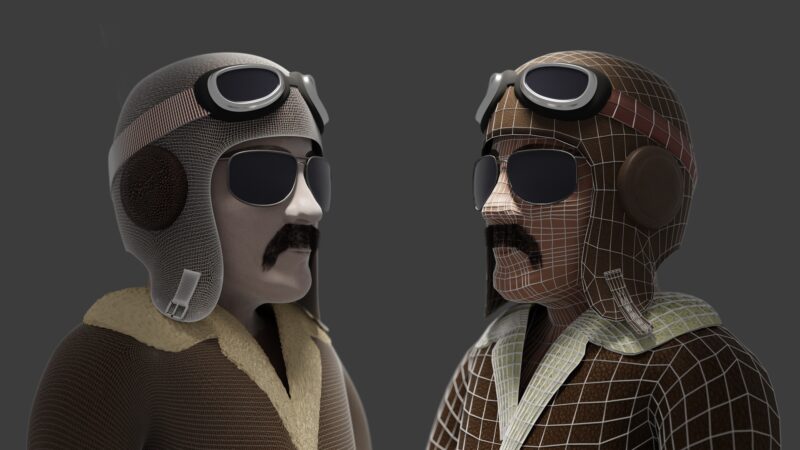
One of the most practical workflows in today’s industry is starting with a high poly sculpt and then creating a low one retopology. The high poly version provides all the intricate details, while the low one is the playable asset.
This is also where solutions like photo to 3d model services can be extremely valuable. Instead of sculpting everything from scratch, artists can quickly generate a detailed base mesh from photographs and then decide whether to optimize it into a low poly asset or keep it as high poly for cinematic rendering. Such tools save production time and allow smaller studios to compete with larger teams.
Key Differences in Workflow
The workflows for low and high poly differ in critical ways:
- Creation process:
Low poly is often modeled with efficiency in mind from the start. High poly usually begins with digital sculpting in software like ZBrush. - Optimization:
Low poly models need UV unwrapping, texture optimization, and polygon reduction to fit into performance budgets. High poly focuses on sculpting details without worrying about optimization. - Final output:
Low poly ends up in the game engine as the asset players interact with. High poly is either rendered offline or used to generate textures for the low assets.
Understanding these differences ensures teams don’t waste time sculpting unnecessary detail for assets that will never be seen up close.
Impact on Animation and Rigging
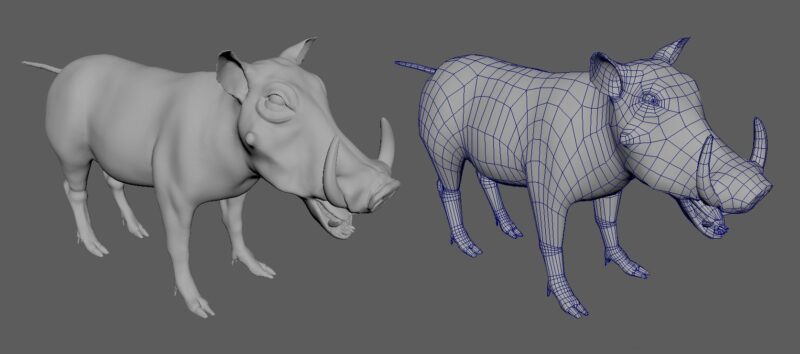
Animation introduces another layer of complexity. High poly models, with their dense geometry, are heavy to rig and animate, often requiring simplification. Low poly meshes, however, deform more predictably during animation, making them the go-to choice for game characters.
A hybrid approach is also common: animators work with low poly rigs but use baked textures from high poly meshes to give the illusion of depth and realism. This workflow balances performance with visual impact.
Performance Considerations in Game Engines
Real-time engines like Unreal Engine and Unity must render dozens or hundreds of assets simultaneously. The polygon budget per frame is a finite resource. Developers carefully calculate how many polygons can be used per character, prop, or environment piece without dropping frame rates.
High poly assets, if used directly, would choke real-time rendering. That’s why normal maps, displacement maps, and baked textures are essential – they allow low meshes to mimic the look of high poly detail without overloading the system.
Visual Quality and the Player’s Experience

From the player’s perspective, the distinction between low and high poly is often invisible. What matters most is whether the asset looks believable within its context.
For example, background buildings in a cityscape don’t need high poly detail since players never interact with them closely. On the other hand, a main character’s face in a cutscene benefits greatly from baked high poly details, since players will notice imperfections.
The trick is knowing where to invest polygons and where to fake detail.
Choosing the Right Approach for Your Project
The decision between low and high poly isn’t binary. Most studios use a combination of both approaches. Factors influencing the choice include:
- Platform requirements: Mobile games need stricter optimization than PC titles.
- Genre: Stylized games may intentionally use low poly aesthetics, while realistic shooters lean on high detail baking.
- Budget and timeline: High poly sculpts require more time and artist expertise.
- Marketing needs: High poly assets are invaluable for trailers, posters, and promotional renders.
By weighing these factors, production teams can allocate resources where they matter most.
Final Thoughts
The distinction between low poly and high poly modeling goes far beyond polygon counts. It’s about making the right production decisions that balance performance, aesthetics, and workflow efficiency. Low poly ensures smooth gameplay and quick turnaround, while high poly provides the rich detail needed for cinematic moments and texture baking.
For most projects, the real magic lies in combining both – sculpting high poly masters, baking their detail, and deploying optimized low poly assets in the final game or animation. By mastering this balance, artists and studios can achieve visuals that are both efficient and stunning.
